How varying the setup at Quail Hollow – and future venues could intensify the Presidents Cup.
Photographs by Chip Henderson
Almost from its inception in 1994, the Presidents Cup has strained to find relevance. Modelled as a familiar, multi-day, United States-versus-World team matchplay event, it could not compete with the historic importance or intensity of the Ryder Cup, particularly because a series of European wins in the mid-1980s altered the complexion of a clash that began in 1927. American players have sometimes found the feelings of patriotic fervour and apprehension that come naturally in the Ryder Cup difficult to summon in the Presidents Cup. Lanny Wadkins famously wondered why his team had to fly “halfway around the world to Australia to play against a bunch of guys from Orlando”, referring to the number of foreign-born professionals who had taken up residence in Florida. For all their individual talent, the International teams often struggle to find unity among players who might hail from as many as five continents. The lack of cohesiveness has contributed to the dominance of US teams that have compiled a suffocating 11-1-1 record overall and a 73-39-21 record in foursomes, the alternate-shot format where chemistry is critical.
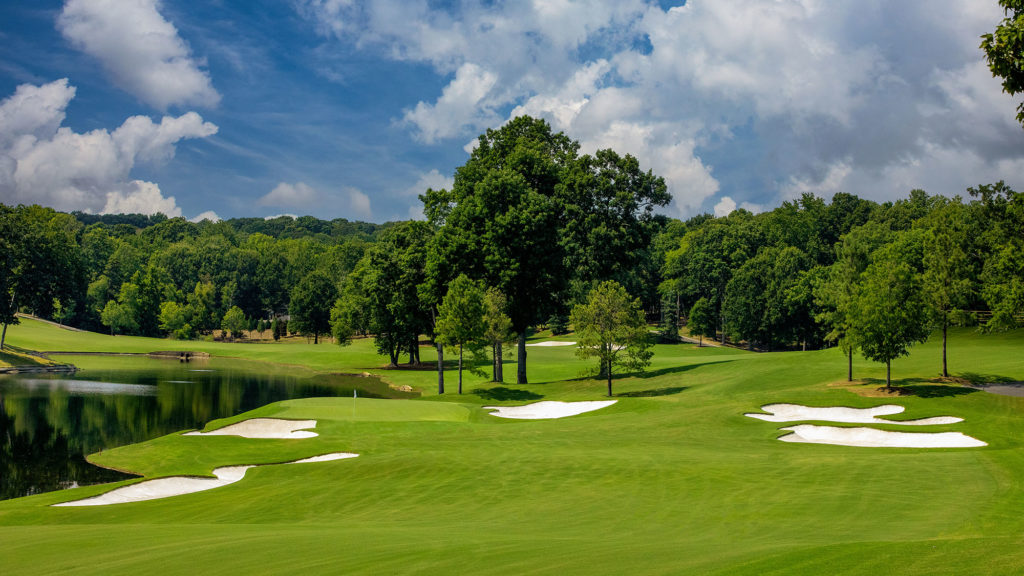
A certain defensive posture was inherent from the beginning. In the mid-1990s, a sizeable percentage of the biggest golf stars were not Americans, and international players had won 16 of the 28 Majors from 1988 to 1994. That made for spirited Ryder Cups against motivated European teams loaded with a nucleus of future Hall of Famers that included Nick Faldo, Seve Ballesteros, Bernhard Langer, Colin Montgomerie, Ian Woosnam and José Maria Olazábal, but left players like Nick Price and Greg Norman, ranked first and second in the world in 1994, on the sidelines with that year’s US Open champion and emerging talent Ernie Els.
Norman in particular was vocal about the importance of including non-European players into major team events. To capitalise on the growing prominence of the international field – or to assuage it, depending on the perspective – former PGA Tour commissioner Deane Beman conceptualised a new showcase between United States and non-European players he hoped would begin in 1996. But in early 1994, when the tour heard news that International Management Group (IMG) had plans to initiate its competition pitting an international all-star team against the reigning Ryder Cup champion team, new PGA Tour commissioner Tim Finchem fast-tracked the plan for the Presidents Cup, as it would be called.
The first event took place in September 1994 at Robert Trent Jones Golf Club in Virginia, with the US team blitzing the opening four-ball session 5-0 against the Internationals playing without Norman (illness), Els (prior commitments) or Jumbo Ozaki (reluctance to travel), who was ranked 11th in the world the week of the matches.
The Americans never looked back, winning 20-12. The scales have not balanced since.
During this month’s Presidents Cup at Quail Hollow Club in Charlotte, several US players who have been core members of past Presidents Cup and Ryder Cup rosters – Dustin Johnson, Brooks Koepka, Patrick Reed and Bryson DeChambeau – will be ineligible because of their affiliation with the new LIV Golf series. Several potential members of the International team will also be ineligible for the same reason. Their absence, and the spectre of profound changes coming in the alignment of the professional tours – and by association the Presidents Cup – will be part of the storyline. Still, barring further significant defections, the US team will be loaded with possibly 10 or more players ranked among the top 17 in the world. The Americans will also have a decided advantage in team matchplay experience. It doesn’t appear to be a recipe for change.
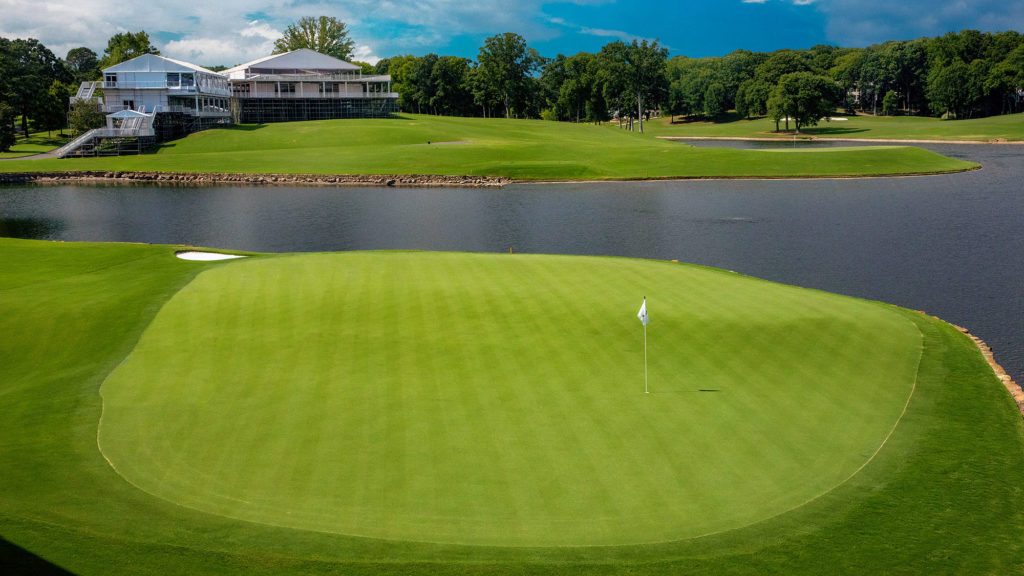
Nothing will enhance the Presidents Cup’s relevance more than tense, tightly contested outcomes, similar to the 2019 matches at Royal Melbourne where the International team began the singles session with a two-point advantage before the Tiger Woods-captained Americans won or halved 10 of their 12 matches. The architecture and setup of Quail Hollow can be an asset in keeping the competition electric if not close.
As host of the 2017 PGA Championship and the regular venue for the Wells Fargo Championship each May, Quail Hollow is very familiar to the players, who know it as one of the PGA Tour’s most formidable strokeplay venues. The 6,950-metre (7,600-yard) layout regularly ranks as one of the 10 highest-scoring courses on tour and played as the most difficult in 2017 during the PGA at nearly two-and-a-half strokes over par.
Quail Hollow’s long, bending holes and large segmented greens are well equipped to thwart professionals who are trying to put together a score over 72 holes. Some might argue that in matchplay, where score in relation to par is irrelevant, the course design is secondary – a compelling match could be waged up and down the Pacific Highway if the skills are approximate and the stakes high enough. But courses do matter. Architectural variety across holes and the degree to which they make players weigh shot options and risk can, if done well, promote impassioned play and escalated psychological brinkmanship.
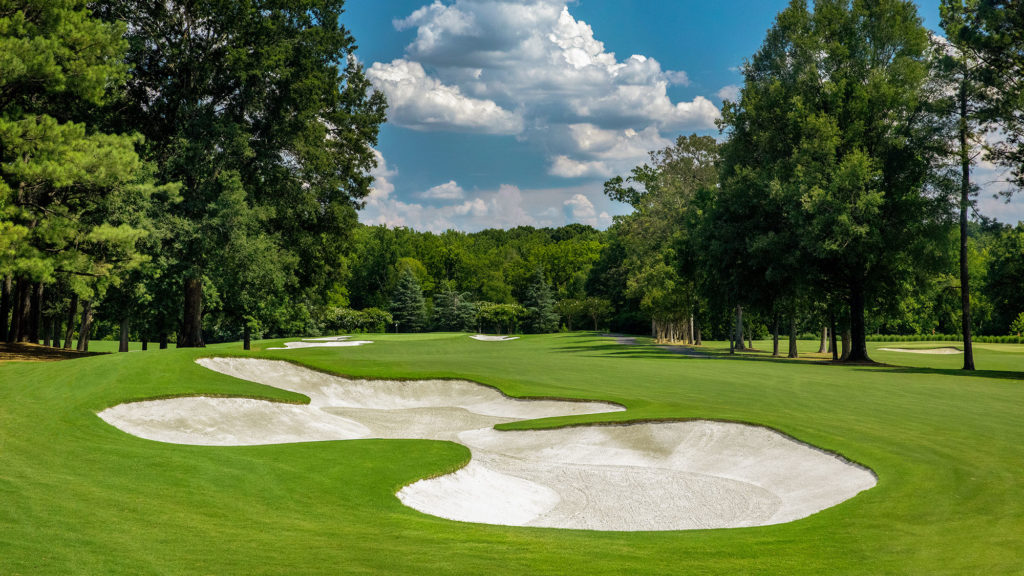
How the tour sets up Quail Hollow will be highly relevant to the outcomes of the Presidents Cup. The tour has acknowledged this by altering the sequence of the holes to better ensure each match will play through the dramatic, momentum-shifting holes that occur late in the second nine. In the previous 13 Presidents Cups, totalling 422 matches, one team or individual closed out the opponent before the 17th hole almost 40 percent of the time. If no alterations were made, many matches would not reach two of Quail Hollow’s most entertaining, throat-clutching cornerstones, the 174-metre par-3 17th playing entirely across water, and the 452-metre 18th, regularly one of the hardest par 4s on tour.
This year, after finishing the par-4 eighth, players will cut over to the tee at the par-4 12th, which will play as the ninth hole in each game. From there, Quail Hollow’s normal run from 13 to 18, including The Green Mile 16th, 17th and 18th, will be placed squarely in the action as Presidents Cup holes 10 to 15. If the matches are still contested, they will continue to the regular 10th and 11th holes (a straight par 5 and a dogleg par 4 that swings left around a pair of deep bunkers), and finish with the long 462-metre ninth, also moving right to left.
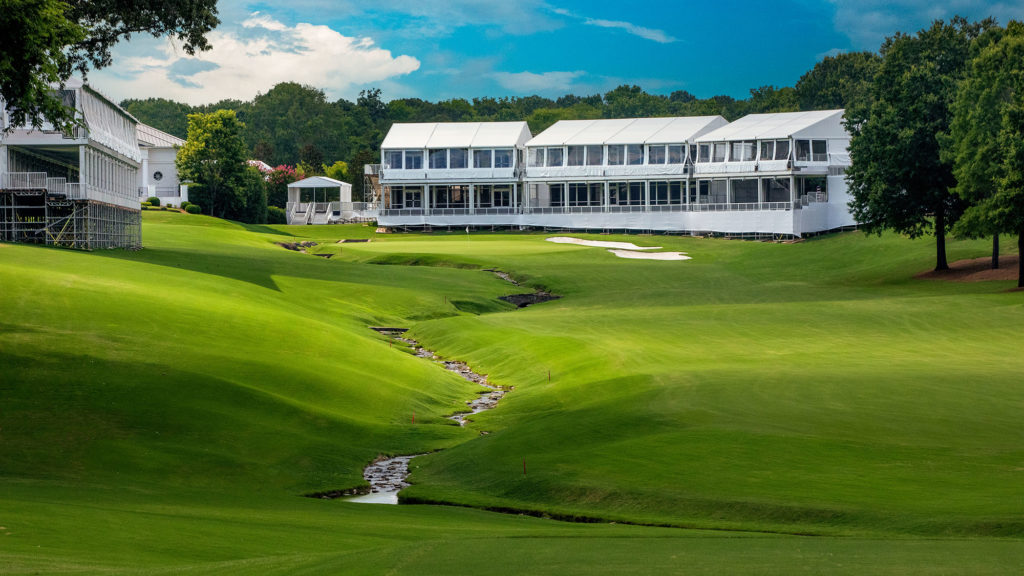
The agronomic plan – more generous landing zones and a lower cut of rough – will favour the same go-for-broke driving mentality the US team used to its advantage at the Hazeltine National and Whistling Straits Ryder Cups of 2016 and 2020. But if the goal is to create as much drama and competitive interplay as possible, the arrangements should strive to avoid predictability and maximise round-to-round flexibility that would force players to make real-time tactical adjustments with high-risk consequences. This can be done by alternating tee markers extremely forward and backward to construct a series of lengthy 450-plus-metre holes requiring long-club approaches (remember, par doesn’t matter) offset by shorter, just attainable half-par holes where birdie or even eagle is
the expectation. In other words, set up a different course for each session.
Moving tees forward at the second and eighth for instance, changing their distances from 413 and 316 metres to driveable holes in the 275 to 290-metre range, offers the possibility that someone will make a 2. The difficultly of the greenside recovery shots, however, also brings 4 into play, and most likely the loss of the hole. The design of Quail Hollow’s 14th through 17th circling a lake in a natural amphitheatre (and playing as 11 to 14) already affords players and teams the opportunity to take risks when trailing or increases their advantage if they are ahead. These holes can be made more dynamic by changing the length or the angles of the tees, making long holes short and vice versa. These adjustments would complicate the captains’ strategy each morning and afternoon, especially in foursomes – and not just which players are paired together, but what holes they should drive from (in foursomes the team members alternate tee shots). Here are six holes at Quail Hollow that could gin up the drama.
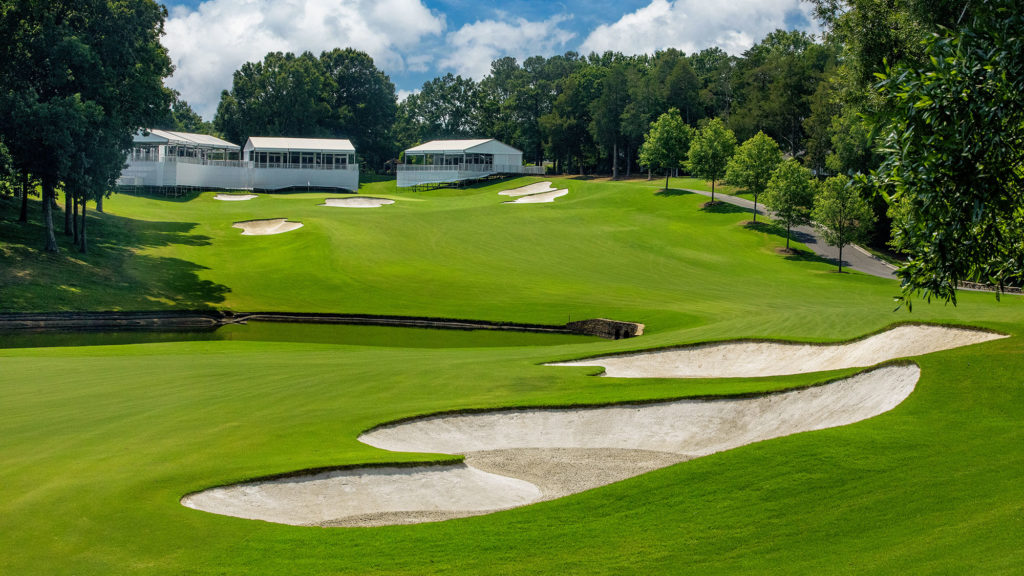
HOLE 11
REGULAR 14 • 315 METRES
The Presidents Cup’s 11th hole is one of the most intriguing short par 4s on tour and has played anywhere from 275 to 315 metres (301 to 345 yards). Even when the tees are back, 35 to 60 percent of the strokeplay Wells Fargo Championship fields typically go for the green. Water runs the length of the hole on the left, and balls that drift in that direction – on tee shots, approaches or chips – are unlikely to stay up. Drives that miss to the right of the green fare little better, leaving downhill pitches from rough over a bunker to a firm green running away towards the lake. The layup is not difficult, but back-left and back-right hole locations approached from anywhere must be treated with respect. Groups or players with the honour who place tee shots on or near the green will put pressure on the opponent, and chances are those who walk off the 11th with 4s will have lost the hole.
HOLE 12
REGULAR 15 • 528 METRES
Only two matches have been closed out on the 12th hole during the Presidents Cup: David Frost over Kenny Perry in 1996 and Adam Scott and K.J. Choi over Tiger Woods and Steve Stricker in 2011. This par 5, playing into one of the most raucous corners of the property with a green wrapped by stadium seating, could be a volatile turning point. The hole rides the topography down to an inlet of the lake and then back uphill to a blind green hidden behind a bunker. From the championship tees it’s a fun half-par hole that the pros have played to a 4.59 stroke average the past four tour events (including the 2017 PGA Championship). Numerous 4s and even some 3s will be carded here, but an intriguing four-ball scenario would be to move the tees forward to the member’s back tees of 454 metres (497 yards) to entice long hitters, once a partner is safely in play, to try to carry the finger of the lake 306 metres on the fly, setting up a pitching-wedge approach.
HOLE 13
REGULAR 16 • 463 METRES
The challenge of the drive at 13 is the reverse camber of the fairway. The tee shot is semi-blind. The hole ducks downhill and to the right around a bunker 270 metres out, but the land tilts left towards the lake. The kick can give players a more direct angle into the 8,000-square-foot green with water bordering left and long. Like the 12th, this could be an interesting hole if played forward from the 359-metre (393-yard) tee. From here it’s 320 metres to the front of the green on a direct, downhill line. Finding the narrow neck of fairway in front of the green, just 20 paces across with the lake left, is high risk, but the opportunity for a pitch-and-putt 3 might be tempting for teams or players trailing in matches as they enter the home stretch.
HOLE 14
REGULAR 17 • 174 METRES
Without wind, this is not a challenging hole from the standard tournament tees – just a 7 or 8-iron for most pros. When the tees are placed at the maximum distance of 210 metres (230 yards), however, it becomes terrifying, and no player will want any part of a flag cut on the left near the water. In the 2018 and 2021 Wells Fargo events, the PGA Tour experimented with moving the tees forward one round, between 123 and 128 metres (135 to 140 yards), turning this into a high-precision shot. The most interesting hole locations in this setup are just over the bunker fronting the green or the front right and middle right, set tight against a roll-off that sends balls careening into a chipping area.
HOLE 15
REGULAR 18 • 452 METRES
Few holes are a more unwelcome sight for leaders coming home than Quail Hollow’s 18th. A creek wobbles up the entire left side of the hole and nestles against the edge of the green, narrowing as it progresses with scant room to bail out on the drive because of trees and a fairway bunker on the right. The green is typically the most difficult to hit in two shots, and left-hand hole locations are especially resistant. In matchplay a 4 is statistically likely to win or halve the hole three out of five games, particularly in foursomes and singles.
HOLE 16
REGULAR 10 • 541 METRES
It can play more than 550 metres, but the 16th is a straightaway green-light hole. A fairway bunker jutting into the left fairway 275 metres out must be avoided for the green to be reachable and is enough of a threat to force drives to the right. That’s not fatal because there is no tactical advantage to challenging the bunker, and the green opens up to shots from the opposite side. When played from the tips, players will be trying to get home from 230 metres or more, and a 4 will put teams and singles in a commanding position. If the markers are shifted forward 50 paces, players will be coming into the elevated green with middle irons and 4 will probably be the minimum needed, especially in four-ball matches, if trailing teams hope to continue.



